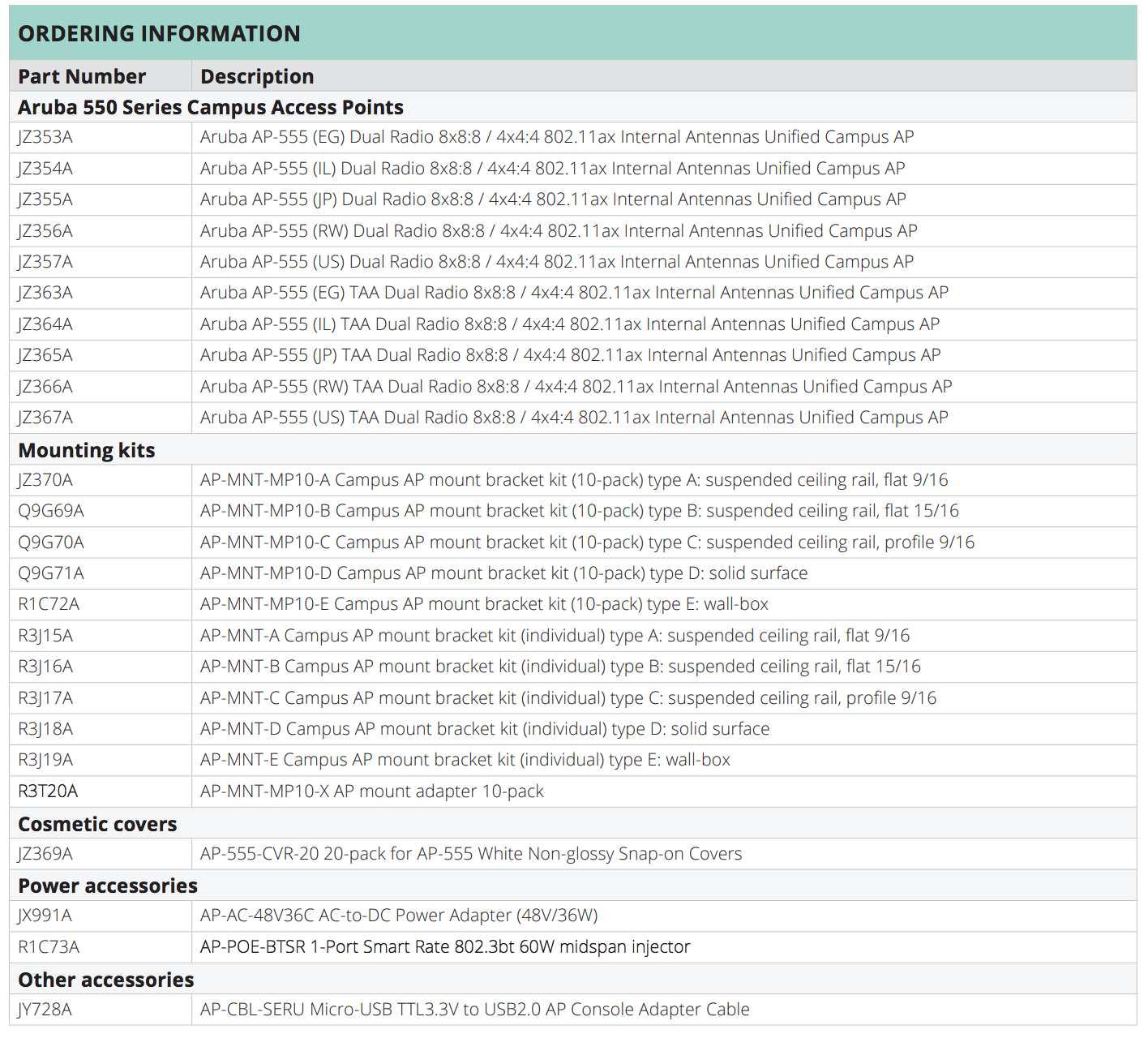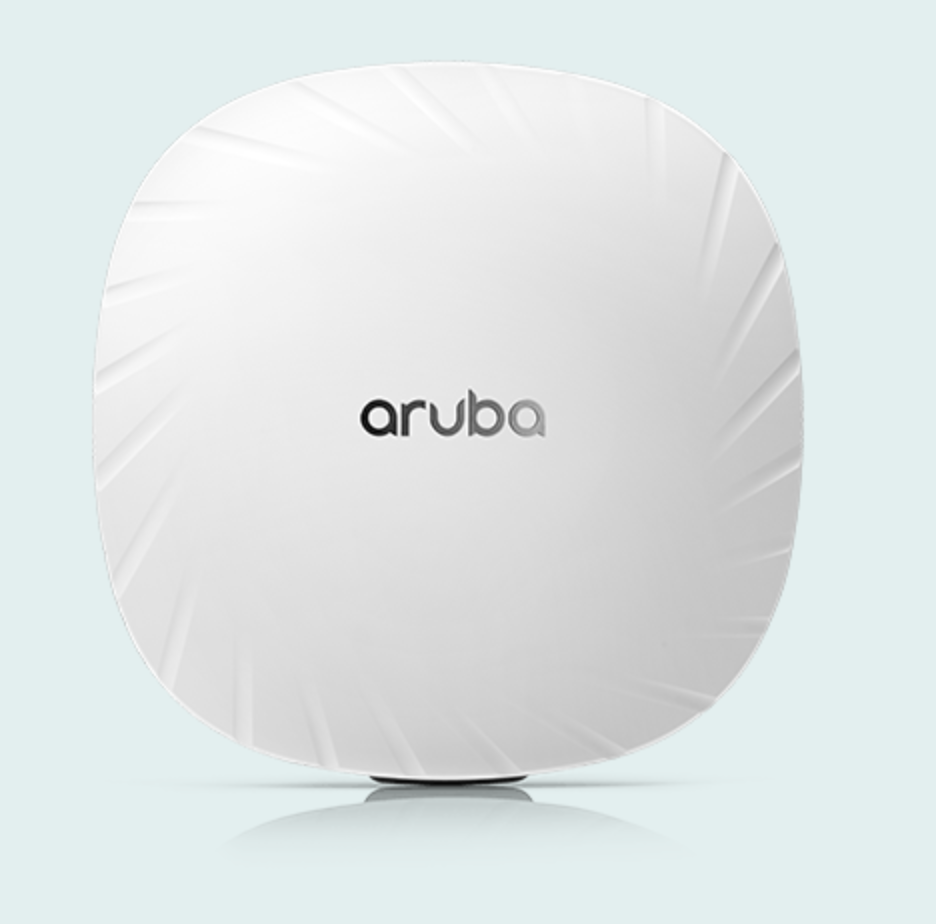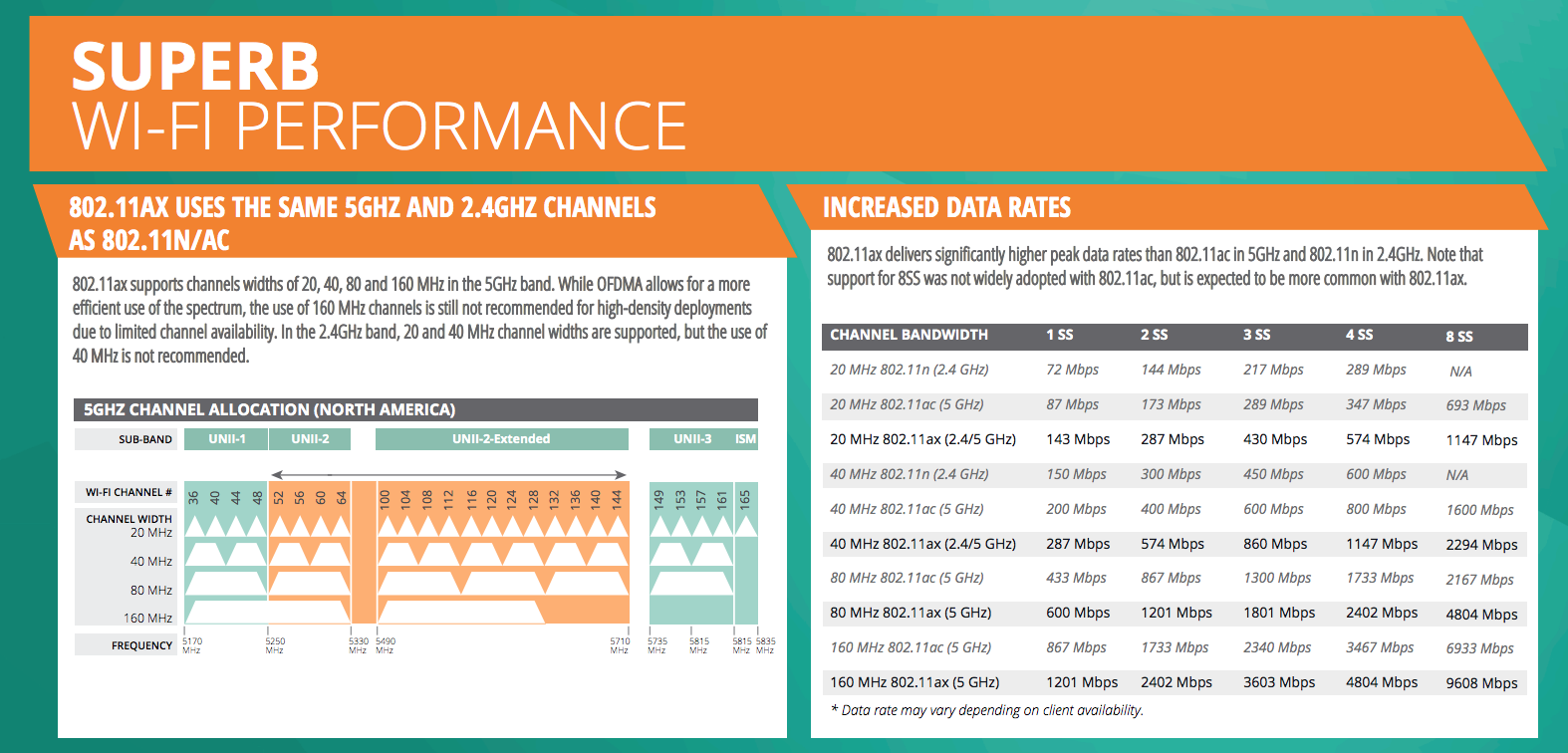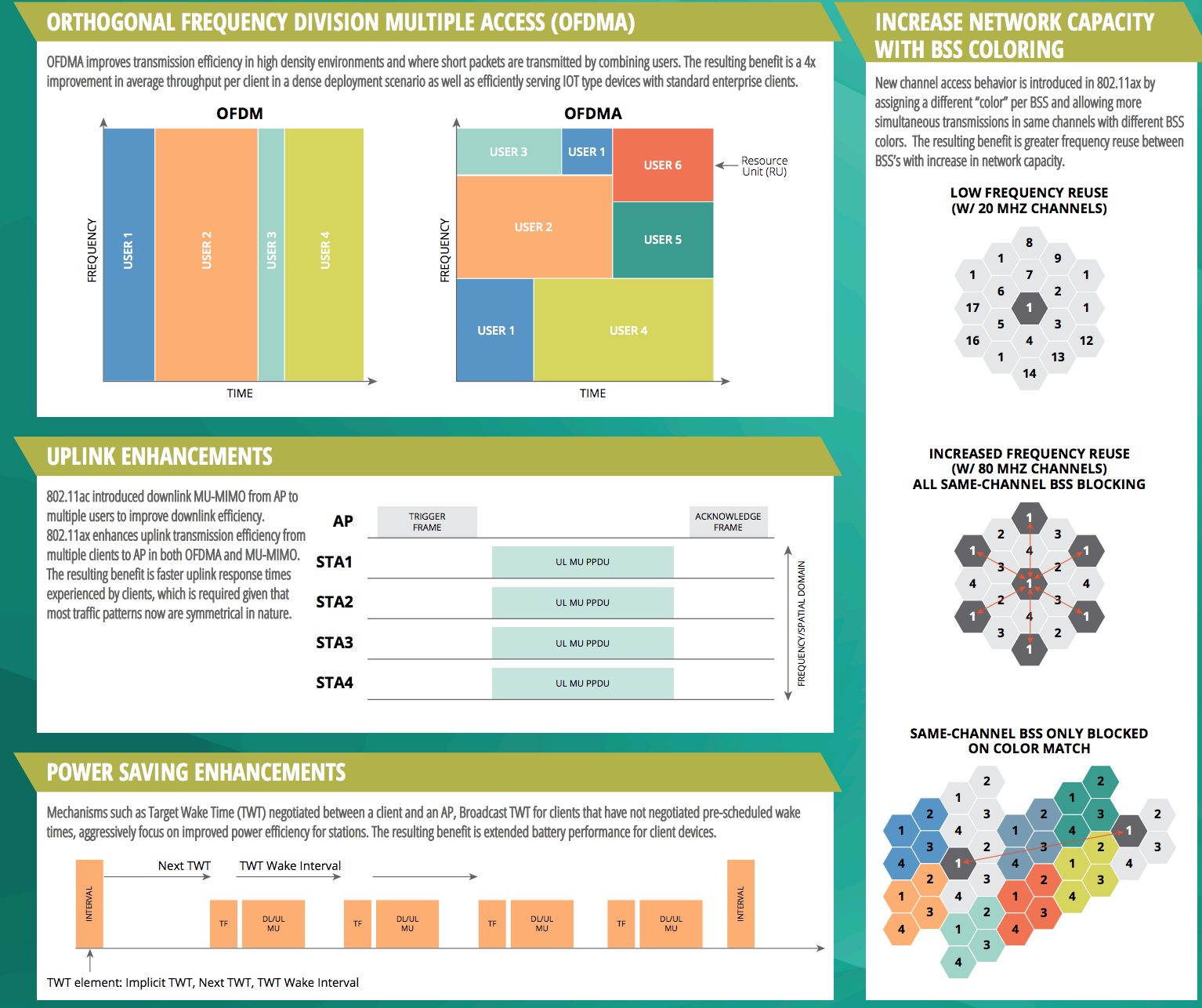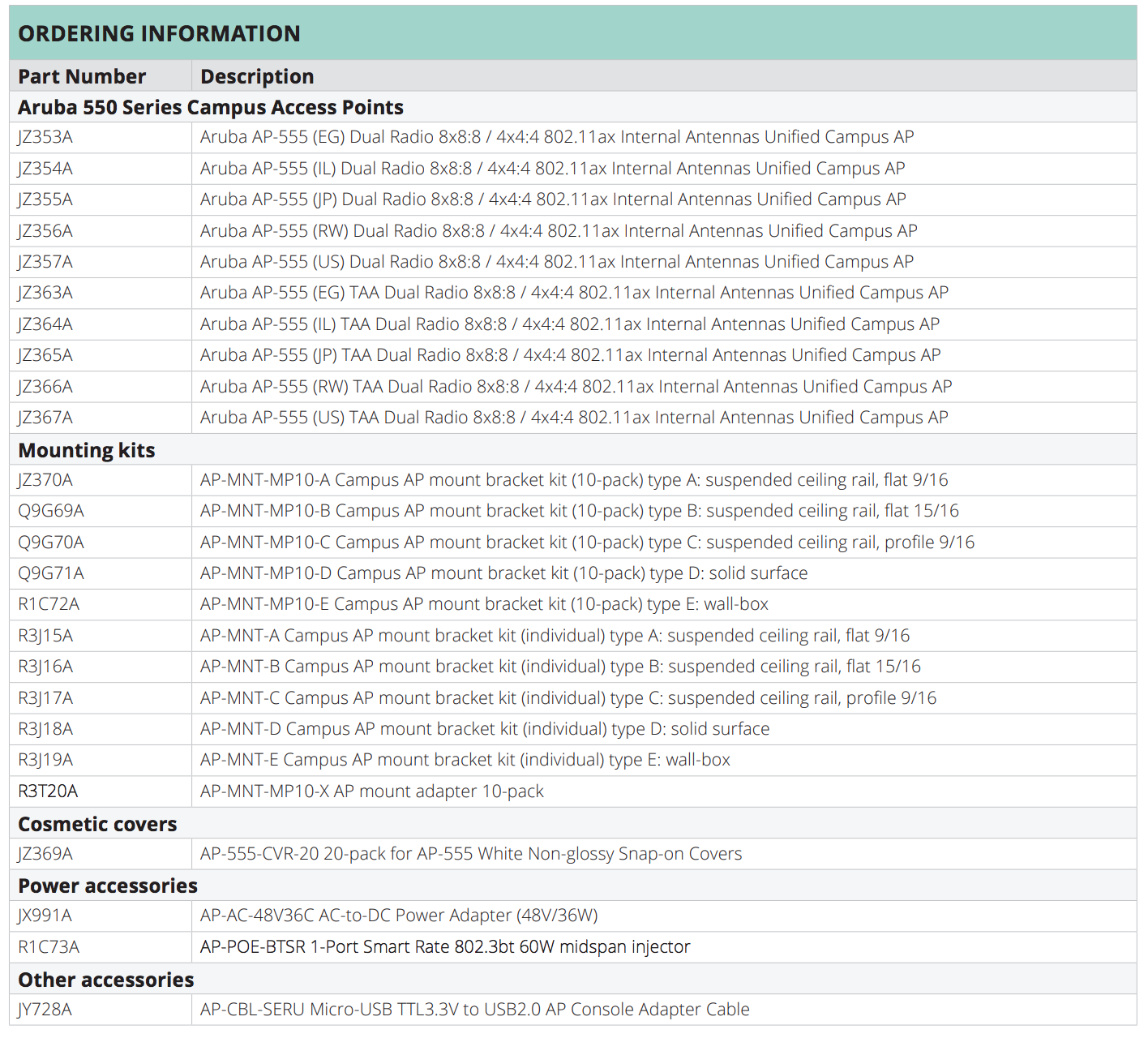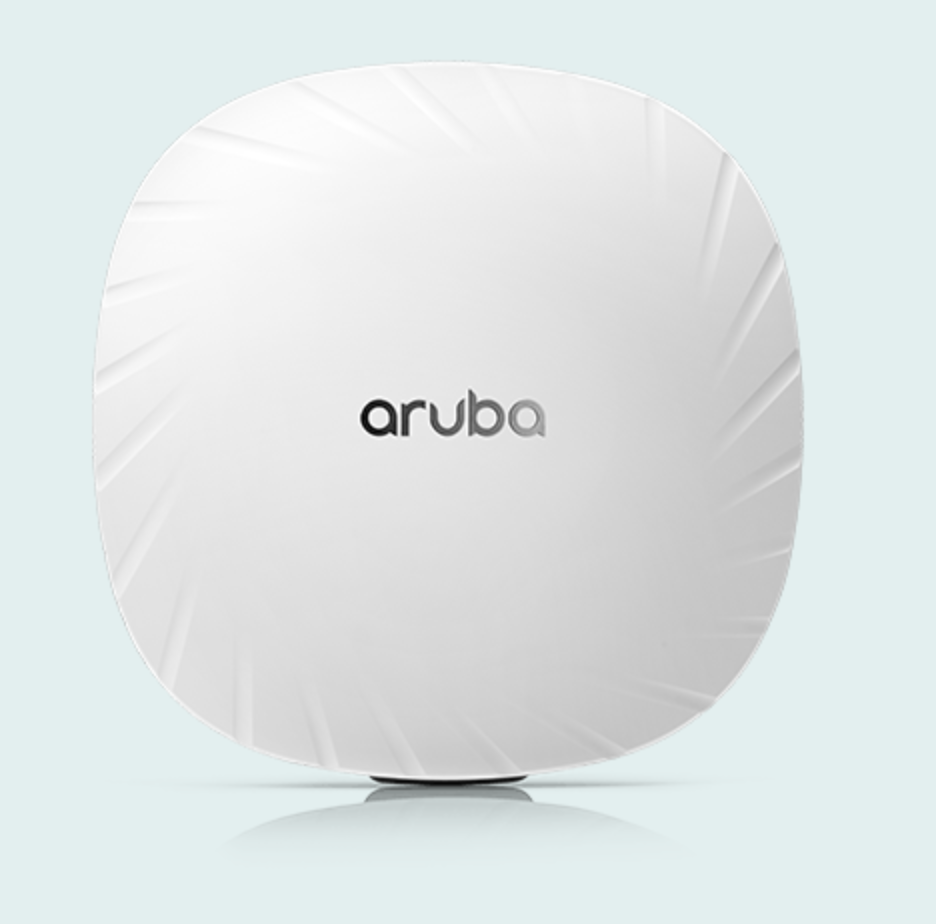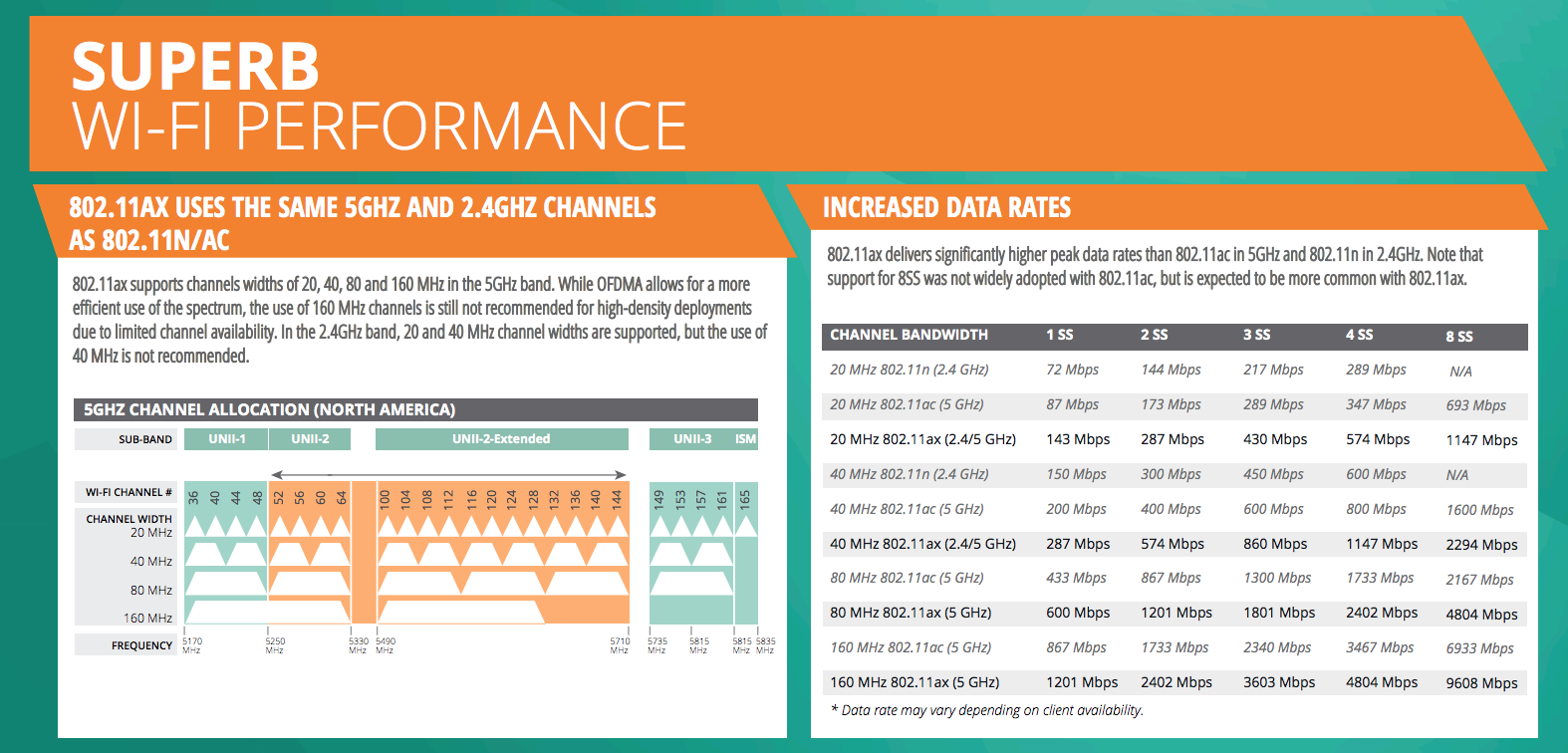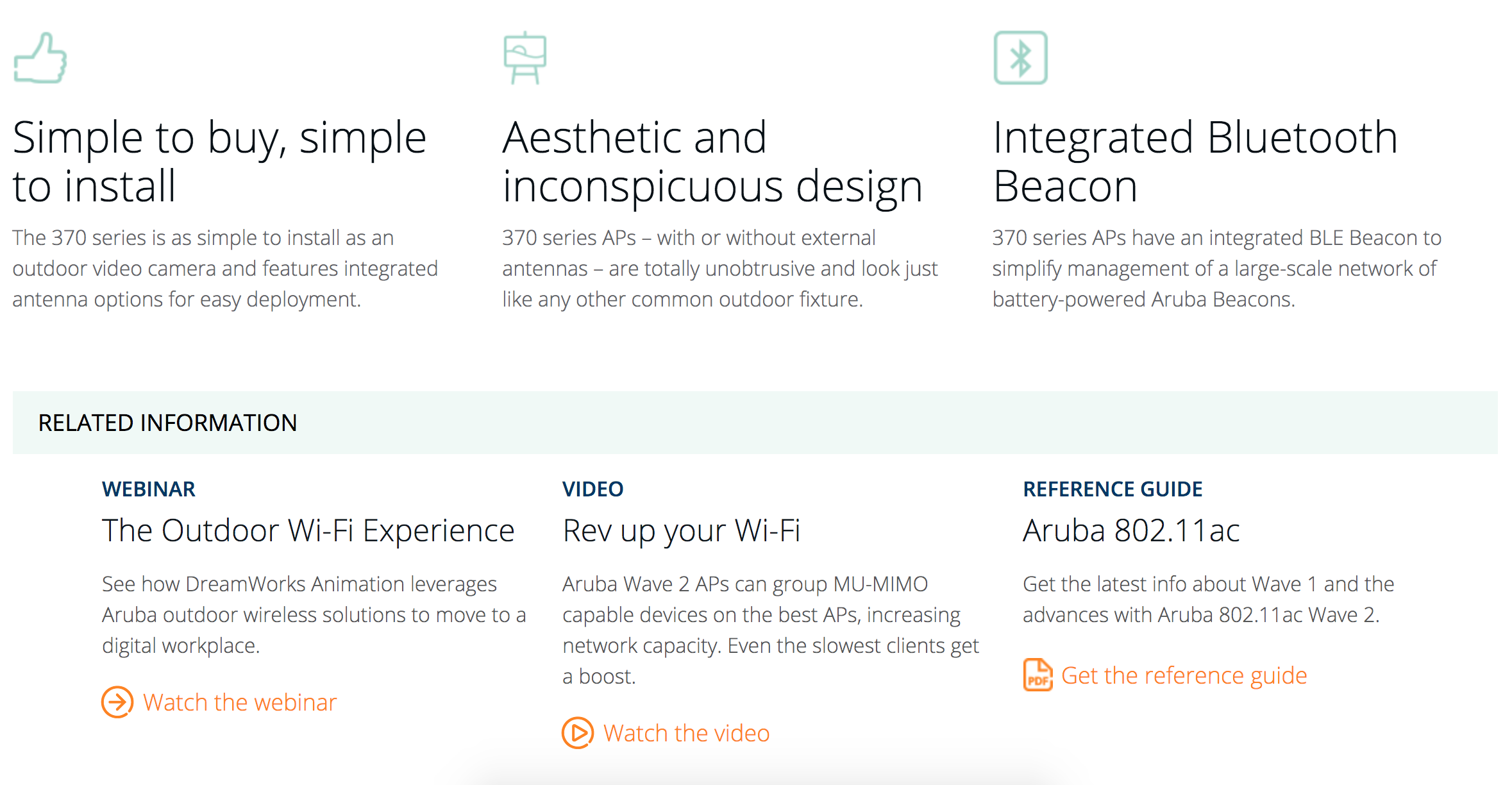Product Description
The Aruba 550 Series with 802.11ax (Wi-Fi 6), combined with Aruba intelligent software innovations are designed to deliver high performance connectivity for extreme high-density deployments of mobile and IoT.
The 550 Series is designed to simultaneously serve multiple clients and traffic types with dual radio (8x8 + 4x4 MIMO) and optional tri-radio mode, boosting overall network performance by up to 4X versus 802.11ac APs.
In addition to the benefits that 802.11ax delivers, the 550 Series provide differentiated capabilities which include AI-powered Wi-Fi RF optimization, always-on connectivity, WPA3 certified security, and unified wired and wireless policy with Dynamic Segmentation. Green AP mode offers AI-powered energy savings of up to 70%.
HARDWARE VARIANTS
AP-555: Internal antenna models
WI-FI RADIO SPECIFICATIONS
- AP type: Indoor, dual/tri-radio, 5GHz and 2.4GHz 802.11ax 4x4 MIMO
- 5GHz radio (dual-radio operation): Eight spatial stream Single User (SU) MIMO for up to 4.8Gbps wireless data rate with individual 8SS HE80 (or 4SS HE160) 802.11ax client devices, or with eight 1SS or four 2SS HE80 802.11ax MU-MIMO capable client devices simultaneously
- 5GHz radio (tri-radio operation*): Four spatial stream Single User (SU) MIMO for up to 2.4Gbps wireless data rate with individual 4SS HE80 (or 2SS HE160) 802.11ax client devices, or with four 1SS or two 2SS HE80 802.11ax MU-MIMO capable client devices simultaneously
- 2.4GHz radio: Four spatial stream Single User (SU) MIMO for up to 1,150Mbps wireless data rate with individual 4SS HE40 802.11ax client devices or with two 2SS HE40 802.11ax MU-MIMO capable client devices simultaneously
- Support for up to 1,024 associated client devices per radio* (typical recommended limit for active clients is 200), and up to 16 BSSIDs per radio
- Supported frequency bands (country-specific restrictions apply):
- 2.400 to 2.4835GHz (radio 1)
- 5.150 to 5.250GHz (radio 0 and 0L)
- 5.250 to 5.350GHz (radio 0 and 0L)
- 5.470 to 5.725GHz (radio 0 and 0U)
- 5.725 to 5.850GHz (radio 0 and 0U)
- Available channels: Dependent on configured regulatory domain
- Dynamic frequency selection (DFS) optimizes the use of available RF spectrum
- Supported radio technologies:
- 802.11b: Direct-sequence spread-spectrum (DSSS)
- 802.11a/g/n/ac: Orthogonal frequency-division multiplexing (OFDM)
- 802.11ax: Orthogonal frequency-division multiple access (OFDMA) with up to 37 resource units (for an 80MHz channel)*
- Supported modulation types:
- 802.11b: BPSK, QPSK, CCK
- 802.11a/g/n: BPSK, QPSK, 16-QAM, 64-QAM, 256-QAM (proprietary extension)
- 802.11ac: BPSK, QPSK, 16-QAM, 64-QAM, 256-QAM, 1024-QAM (proprietary extension)
- 802.11ax: BPSK, QPSK, 16-QAM, 64-QAM, 256-QAM, 1024-QAM
- 802.11n high-throughput (HT) support: HT20/40
- 802.11ac very high throughput (VHT) support: VHT20/40/80/160
- 802.11ax high efficiency (HE) support: HE20/40/80/160
- Supported data rates (Mbps):
- 802.11b: 1, 2, 5.5, 11
- 802.11a/g: 6, 9, 12, 18, 24, 36, 48, 54
- 802.11n: 6.5 to 600 (MCS0 to MCS31, HT20 to HT40), 800 with 256-QAM
- 802.11ac: 6.5 to 1,733 (MCS0 to MCS9, NSS = 1 to 4, VHT20 to VHT160), 2,166 with 1024-QAM
- 802.11ax (2.4GHz): 3.6 to 1,147 (MCS0 to MCS11, NSS = 1 to 4, HE20 to HE40)
- 802.11ax (5GHz): 3.6 to 4,804 (MCS0 to MCS11, NSS = 1 to 8, HE20 to HE160)
- 802.11n/ac packet aggregation: A-MPDU, A-MSDU
- Transmit power: Configurable in increments of 0.5dBm
- Maximum (aggregate, conducted total) transmit power (limited by local regulatory requirements):
- 2.4GHz band: +24dBm (18dBm per chain)
- 5GHz band: +27dBm in dual-radio mode, +24dBm in tri- radio mode (18dBm per chain)
- Note: conducted transmit power levels exclude antenna gain. For total (EIRP) transmit power, add antenna gain.
- Advanced Cellular Coexistence (ACC) minimizes the impact of interference from cellular networks
- Maximum ratio combining (MRC) for improved receiver performance
- Cyclic delay/shift diversity (CDD/CSD) for improved downlink RF performance
- Space-time block coding (STBC) for increased range and improved reception
- Low-density parity check (LDPC) for high-efficiency error correction and increased throughput
- Transmit beam-forming (TxBF) for increased signal reliability and range*
- 802.11ax Target Wait Time (TWT) to support low-power client devices*
